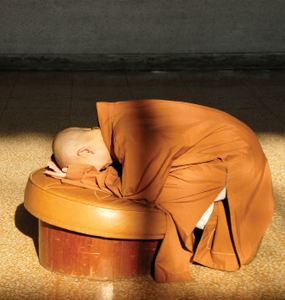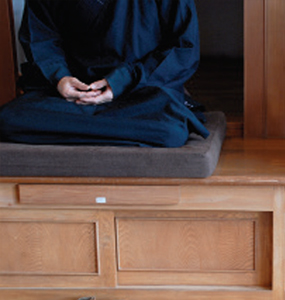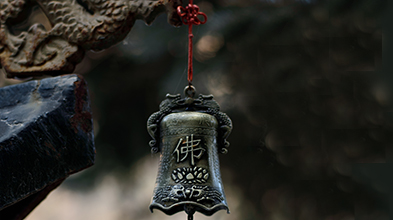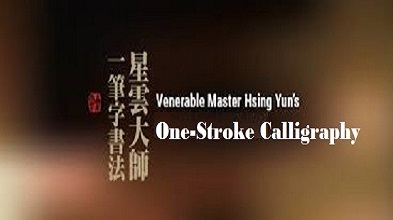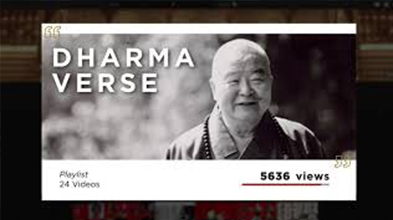We cushions have never been limited to only Buddhist monasteries and temples; we are found in many places. Every family—rich or poor, prominent or humble, large or small—makes use of us cushions.
Round and flat and traditionally woven from rush grass, a prayer cushion is used in a shrine room while meditating or kneeling so as not to soil one’s clothing. There is a rich variety of prayer cushions: some are thick and round, some are woven from lyon’s grass, while some are even ring-shaped with holes in the middle.
Prayer cushions also vary widely through the vari-ous regions of China due to differences in climate, ge-ography, and local custom. Some cushions are round and made of cloth, while others are low stools made solely from wood.
The prayer cushion assists practitioners in making a mind-to-mind connection with the Buddha, for it is with the cushion that we bow to the Buddha and seek repentance. When bowing, we devoutly express our admiration and deep regard for the Buddha. We can also seek repentance for our past faults while upon the prayer cushion. It was upon prayer cushions that most of the great sages of the past attained enlightenment.
I am a cushion. I have always been quite popular in China. We cushions have never been limited to only Buddhist monaster-ies and temples; we are found in many places. Every family—rich or poor, prominent or humble, large or small—makes use of us cushions.
I am called putuan in Chinese. Pu means “water grass” and tuan means “round.” Originally, we cushions were made from rushes and were circular in shape, so that is how I got my name! We are used to keep clothing from getting dirty when kneeling and bowing. As the use of cushions spread to all parts of China, different kinds of materials were used in making us, and we were fashioned in many shapes and sizes. In temples today, you find cushions made from cotton and other material and in rectangu-lar shapes on both long and short benches. But whatever the size, shape, and material, we are all called cushions!
Depending on their experience with Buddhist traditions, peo-ple will have different styles of bowing and showing devotion to the Buddhas. Beginners will often bob up and down quickly over and over, while the more experienced cultivators will usually take their time bowing reverently, humbly touching their foreheads to the cushion and gracefully uncurling the fingers of both hands with their palms facing up, open to the Buddha. I have found that people’s level of cultivation is reflected in their manner of bowing. Experienced practitioners are quiet and composed when they pray, while beginners are more impatient and less focused.
Some beginners, not yet familiar with Buddhist etiquette, will enter the Great Hall through the middle door and kneel down on the cushion in the center of the hall. Both the middle door and cushion are reserved for use by the abbot and the monastic who presides over the Dharma service. It is as if beginners think that the Buddhas and bodhisattvas might not notice them if they kneel on the cushions that are placed to the side in the hall.
As a cushion, I am like a bridge between sentient beings and the Buddha Land, because I am in direct contact with the cultiva-tors who come to the temple. I have first-hand knowledge of the benefits of Buddhist practice —especially of chanting and bowing. The sutras say, “Chanting the Buddha’s name can eliminate un-wholesome acts as numerous as grains of sand in a river. Bowing to the Buddha can bring boundless blessings and happiness.” Culti-vators usually sit on me to meditate with their eyes closed, chant-ing the Buddha’s name. They also bow to the Buddha and kneel down on me to show their respect. I am very close to practitioners, because they use me so much.
Besides earning merit and bringing good fortune, bowing can improve a person’s health and eliminate pride and other bad habits. Bowing is even said to be helpful for healing stomach ailments. I watch how the positive changes in the practitioners become encour-agement for others. This allows people to be more receptive to the teachings of the Buddha. A final benefit is that, as people become more focused and aware, they have fewer intrusive thoughts, stay-ing more in the present moment. I do not want to speak too much about the benefits of paying respect to the Buddhas and bodhisat-tvas. It is much better for people to put the teachings into practice in their own lives and experience the benefits for themselves.
It has troubled me to discover over the years that there are some disingenuous people in this world. These are the ones who kowtow to the Buddhas out of a less than candid piety. Instead, they make their prostrations in order to impress. This falsehood is demeaning to them, and it reflects poorly on the efforts of sincere cultivators. On one occasion, I heard an elder monastic telling a younger one that sincerity was not important when bowing to the Buddha. He said that what mattered most was to impress others! Fortunately, the young monastic realized the folly of this advice and vowed to do his bowing in private in order to avoid being criticized for impressing others in public.
Some practitioners who come to the temple go directly to pay their respects to the abbot and other senior monastics first. A few even come to visit with and pay their respects to their friends with-out even bothering to go and bow before the Buddha. If you think that it doesn’t matter whether or not you venerate the Buddha before anyone else, then you are wrong. Your priority should be to put the Buddha in your mind before anyone else. The people who want to impress others and receive flattery place themselves and others above the Buddha. If this is your priority, then there is no need to learn loving-kindness and compassion from the Bud-dha—just allow yourself to be pulled down by the vanity of other people.
I hear people bragging about the number of times they chant a Buddha’s name or how many times they bow each day. I am sad-dened by this, for this comes from a shallow wish to gain recogni-tion and approval and not from a sincere devotion to the Buddha.
I have heard some say of Buddhism that its practitioners worship idols. I was shocked and worried when I first heard this, because if people were to stop honoring the Buddha, then what would happen to me. When I thought about the matter, though, I realized that such criticism is unnecessary, and generally comes from a lack of understanding. There is nothing unique about the intention behind this Buddhist practice. It is the same as with other religions and aspects of society from the highest institutions right on down to families in private homes. Christians have pictures of Jesus in their churches and homes, government offices have pic-tures of elected officials hanging on their walls, and many Chinese families have an ancestral tablet. Are these pictures and memorials all not displayed in honor of respected political and religious lead-ers and deceased family members? It is the same with Buddhism! We have statues of Buddhas and bodhisattvas to show honor and respect for the supreme teachers and shining exemplars who show us the Dharma path to enlightenment and whose lives embody the virtues of compassion and righteousness.
There are some people who are not Buddhist, but who still come to the temple to pay their respects to the Buddha. They do not understand the true meaning of bowing and making offerings. Instead, they prostrate and make offerings before the Buddha and bodhisattvas to petition for favors. What they ask for ranges from requests for more sons and grandsons to relief in times of hard-ship. I hope that the more experienced cultivators can help them to become aware of the true purpose of bowing and making offer-ings. Then those who are not Buddhists will be less likely to get the wrong idea about the Buddhist practice of bowing.
Bowing is only one method of cultivation. At one time, some monastics went out of the temple to cultivate. They attended fu-neral services to pray for the dead and in return, they received payment for this service. Understandably, some people were criti-cal of this practice. Once there was a Chan master named Hanshan Deqing, who used to officiate at funeral services. Walking home late one night, returning from a funeral service, an elderly couple was frightened by his sight. The wife was surprised that someone would be out walking in the middle of the night. Her husband told her that the only people out walking at that time of night were thieves or those attending funeral services. When Master Hanshan Deqing overheard this, he was offended to be placed in the same category as thieves. Upon reflection, however, he made a vow stat-ing that he “would choose to die while seated upon a cushion in meditation rather than officiate at another funeral service.” He went on to become a famous and much admired master.
Monastics take a vow to work to liberate all sentient beings and to toil for the ennoblement of humans. If they are unable to undertake the Mahayana path of Buddhism to liberate all sentient beings, at least “choosing to die while seated upon a cushion in meditation” will not bring harm upon Buddhism!
What's New?
DECEMBER

Humble Table, Wise Fare
INSPIRATION
Recorded by Leann Moore
Being humble before people,
the road is open wherever you go;
being arrogant before people,
it is difficult to move even one step.
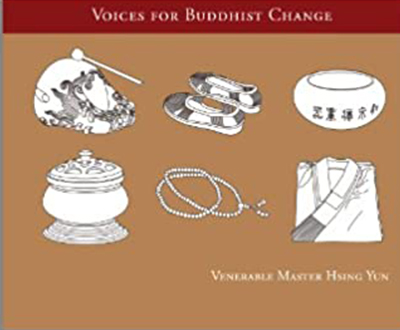
Dharma Instruments
Venerable Master Hsing Yun grants voices to the objects of daily monastic life to tell their stories in this collection of first-person narratives.
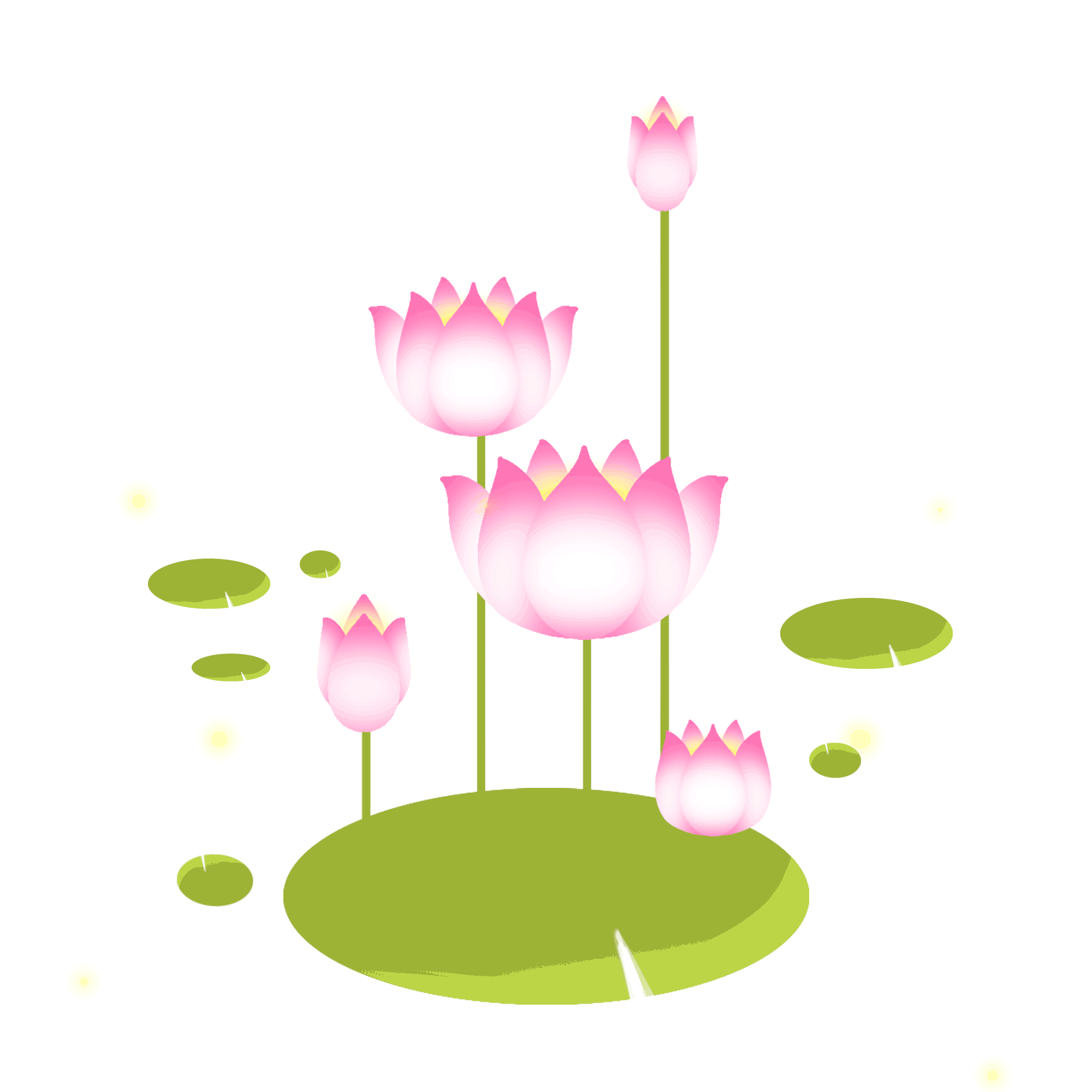
Sutras Chanting
The Medicine Buddha SutraMedicine Buddha, the Buddha of healing in Chinese Buddhism, is believed to cure all suffering (both physical and mental) of sentient beings. The Medicine Buddha Sutra is commonly chanted and recited in Buddhist monasteries, and the Medicine Buddha’s twelve great vows are widely praised.

Newsletter
What is happening at Hsingyun.org this month? Send us your email, and we will make sure you never miss a thing!
